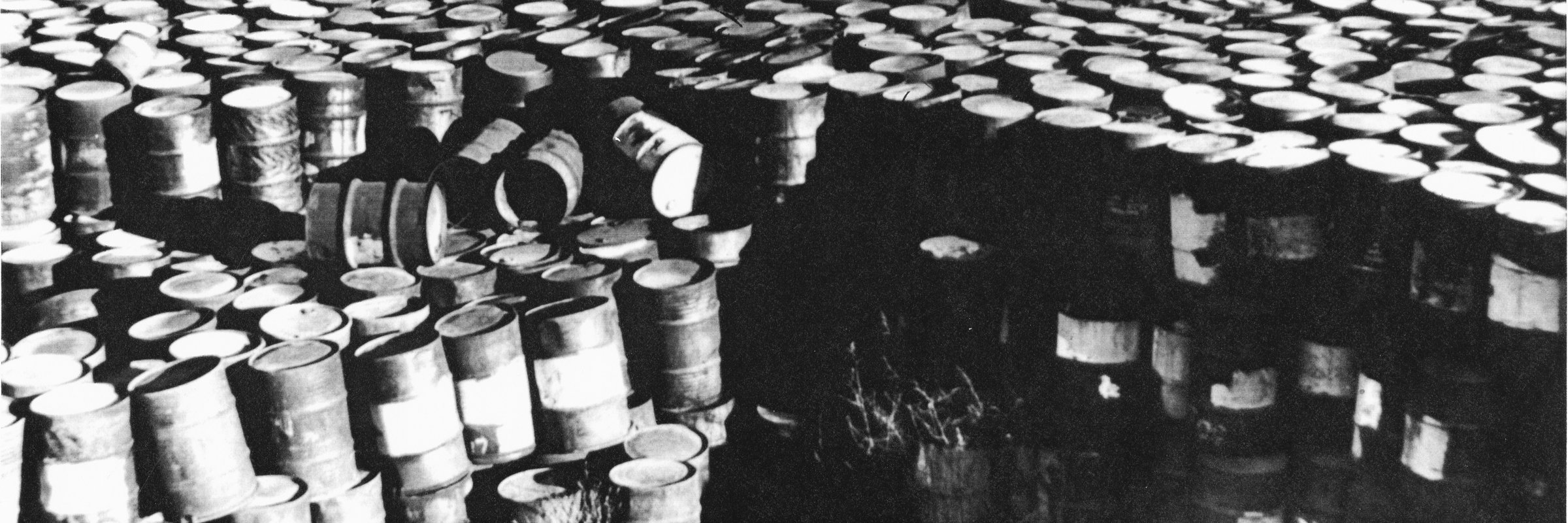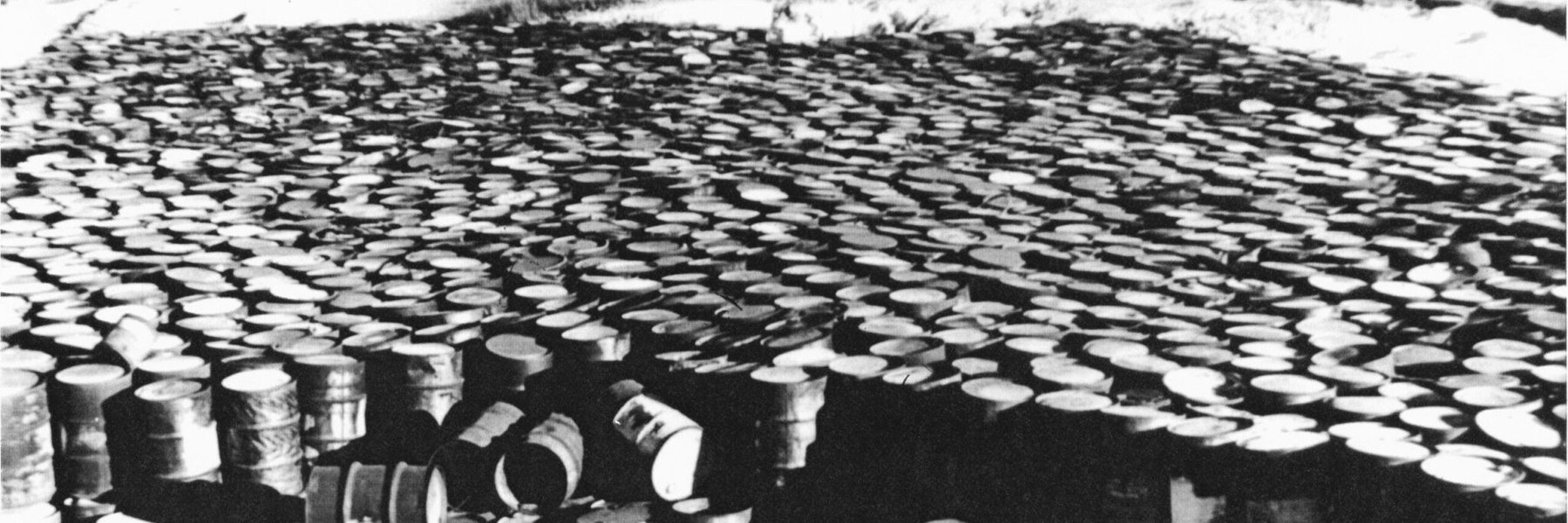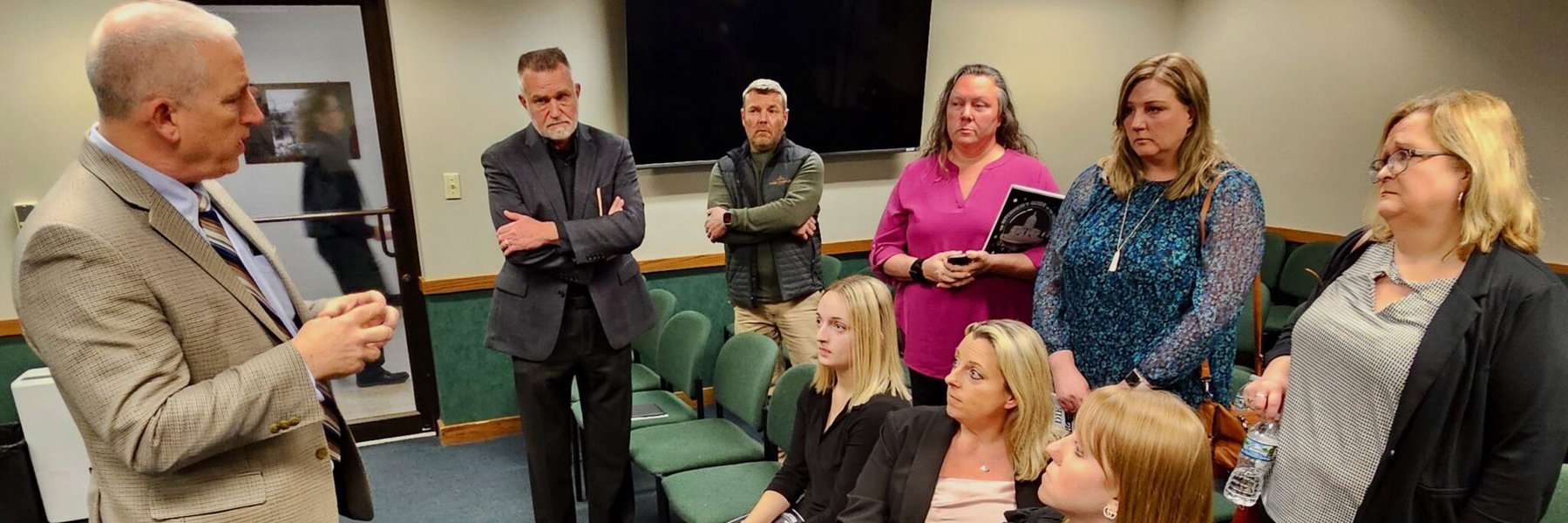Revelations that government officials and private companies downplayed or failed to fully investigate the dangers of radioactive waste in St. Louis sparked outrage among state and federal lawmakers Wednesday and a promise from U.S. Sen. Josh Hawley to seek funding for residents who have become ill.
At the heart of the bipartisan calls for action were the findings of a six-month joint investigation by The Missouri Independent, MuckRock and the Association Press that delved into thousands of pages of previously-unreleased government documents detailing the St. Louis area’s legacy of contamination.
The issue has been covered extensively by journalists over decades, but the trove of documents obtained through the Freedom of Information Act and reviewed by the three newsrooms show that year after year, decade after decade, government regulators and companies downplayed the risks posed by remnant nuclear waste or failed to investigate them fully.
Hawley, in an afternoon Senate speech following publication of the findings, said when the U.S. has asked citizens to “bear unique burdens or when we have put them in harm’s way,” it has promised to stand with them. The government should do the same, he said, for St. Louis residents who have been exposed to nuclear waste left over from World War II.
“The Manhattan Project, which was a national project for war — the people of St. Louis have borne the burden of it,” said Hawley, R-Missouri. “And now it’s time for their government to make it right.”
The federal government needs to pay the medical bills for St. Louis residents who have contracted illnesses because of radioactive waste, Hawley said, and he will introduce legislation to create a fund to “make the people of St. Louis whole.”
Hawley and U.S. Rep. Cori Bush, D-St. Louis, both released statements critical of the federal government’s handling of the waste.
Missouri’s other U.S. senator, Republican Eric Schmitt, grew up in the area and said in a statement that the issue “is near and dear to my heart” and that he would fight for residents “every step of the way.”
While Missouri’s congressional delegation united across party lines to decry the latest revelations, there were also calls for action on the state level.
Activists and state lawmakers demanded Missouri Attorney General Andrew Bailey, a Republican who took over the office in January, to take legal action against the U.S. Department of Energy and other federal agencies.
And three state representatives announced they will address the “dangerous situation” at a news conference Thursday and “call on Missouri’s leaders, the U.S. Department of Energy and the federal government to do the right thing and work to resolve these issues once and for all.”
“Today, we found out they knew all along people were being harmed,” Rep. Richard West, R-Wentzville, said in the release.
St. Louis’ legacy of nuclear waste starts in downtown where Mallinckrodt Chemical Works processed uranium for the Manhattan Project, the name given to the effort to develop the first atomic bomb.
After the war, waste was left in the open at the St. Louis airport where it was dispersed by wind and rainwater. Government documents show it entered Coldwater Creek, which winds through suburban St. Louis before emptying into the Missouri River, from the site.
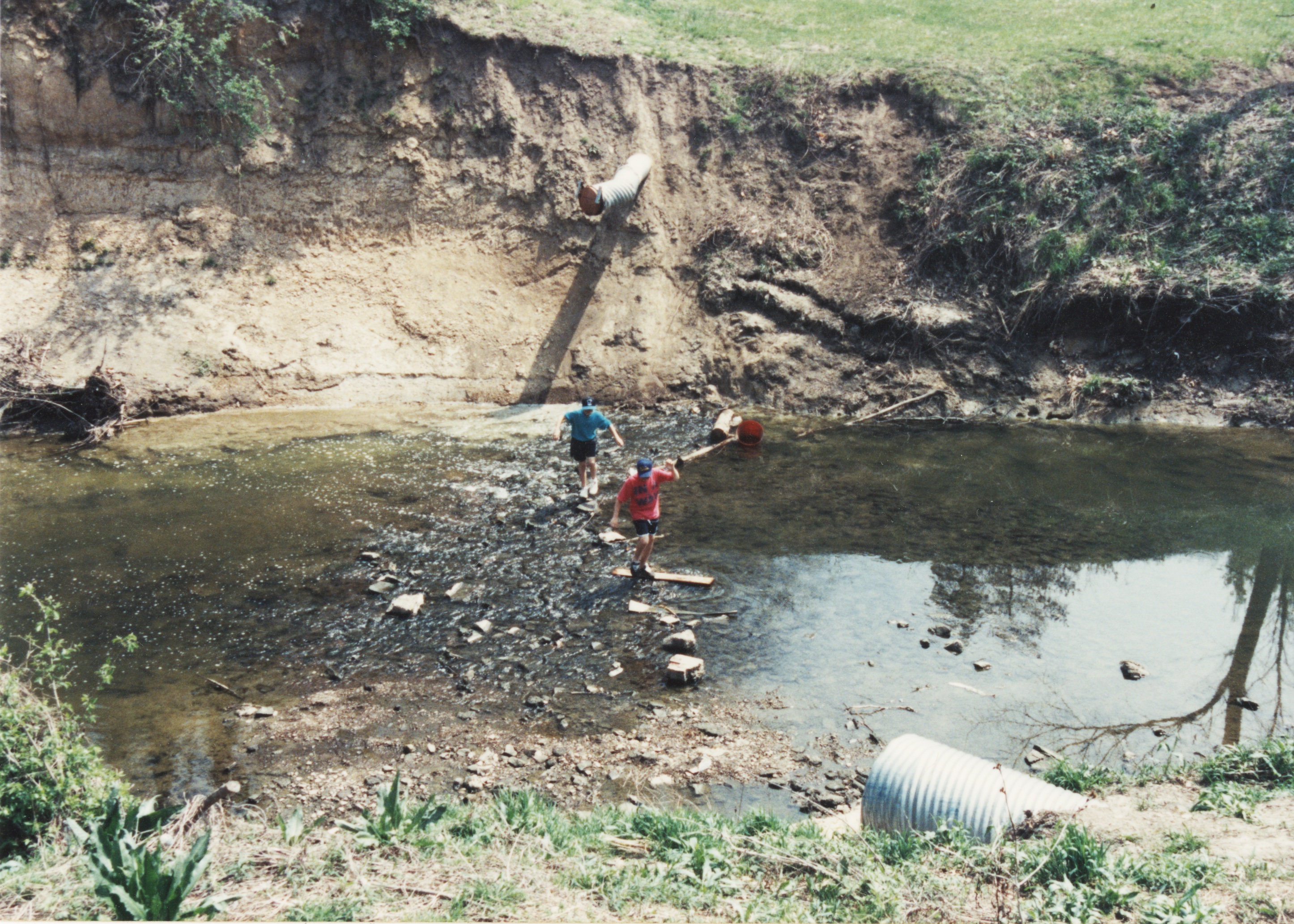
The waste was moved to a site on Latty Avenue in Hazelwood where it was dried by a private company that purchased the waste to extract valuable metals. There, it also sat in close proximity to Coldwater Creek – some of it in deteriorating steel drums.
And in 1973, the leftover waste that couldn’t be used to extract metals was dumped into the West Lake Landfill in Bridgeton where it remains today.
“From downtown St. Louis to my backyard, the Department of Energy’s lack of diligence has destroyed families and lives,” said Rep. Doug Clemens, D-St. Ann. “They should be held accountable for their waste and the harm it has caused.”
Coldwater Creek
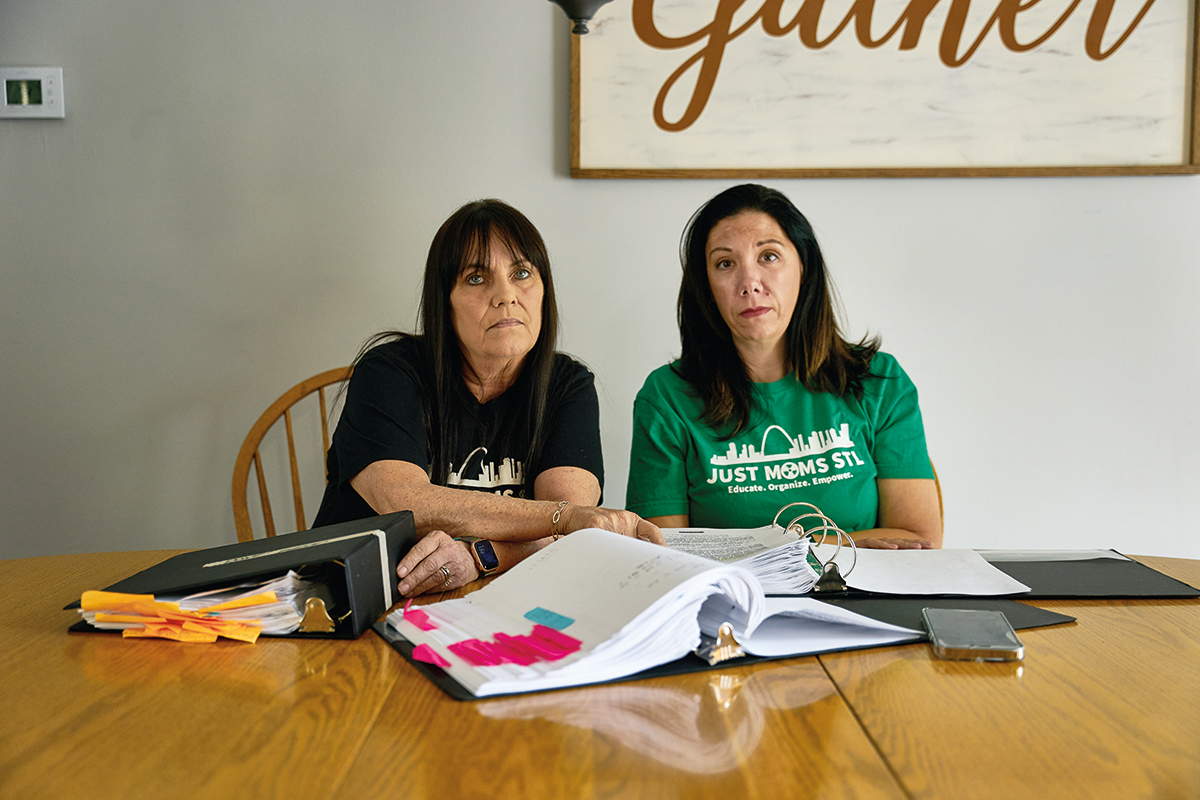
Coldwater Creek, which winds through Hazelwood, Florissant and other St. Louis suburbs was a playground for many kids growing up in the 1960s, 70s and 80s. But residents didn’t know it was contaminated.
Now, decades later, droves of them, including Karen Nickel, co-founder of Just Moms STL, attribute a host of rare illnesses and cancers to the creek’s waters.
“These documents are all the proof I need to validate that I am sick,” Nickel said in a release Wednesday. “For the past 11 years, I have been labeled as a crazy, hysterical mom.”
Bush called the findings from the investigation “troubling.”
“They are not surprising and confirm what we’ve known for years,” Bush said in a statement. “For far too long, our community has suffered the consequences of radioactive waste that poisons our water, our neighborhoods and our loved ones.”
Bush has proposed legislation, alongside Hawley, to force the cleanup of a local elementary school and require the Department of Energy to publicly track radioactive waste. She said she stays in constant communication with federal agencies overseeing cleanup efforts.
“Our community needs and deserves answers,” Bush said. “We all deserve a clean environment, especially in the places we send our children. It is the responsibility of the government to protect people from harm, not expose them to it.”
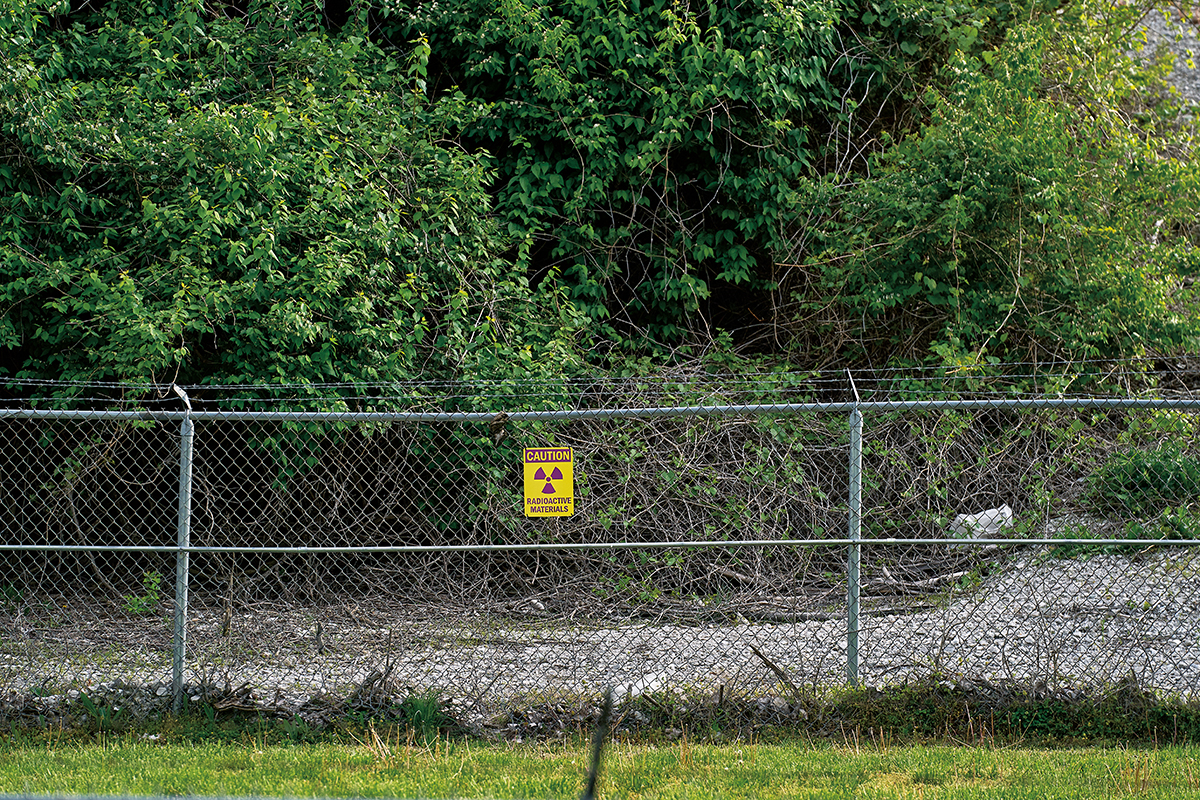
While in office, former U.S Sen. Kit Bond, R-Missouri, worked to direct funds toward the cleanup of a contaminated quarry and uranium processing site in Weldon Spring and championed legislation to provide compensation to uranium workers from the area.
“During his time in the Senate, whether it was fighting for the justice our Cold War workers were owed or to get an old site cleaned up, the process was mired in bureaucratic red tape, funding problems, liability concerns, and authorization delays,” said Shana Marchio, a spokesperson for Bond.
According to government documents, Mallinckrodt Chemical Works, which refined uranium in downtown St. Louis, knew as early as 1949 that radioactive residue stored in deteriorating steel drums at the airport posed a risk of contaminating Coldwater Creek.
Testing from 1976 by the Department of Energy showed contamination entering the creek. But the public wouldn’t find out about contamination to Coldwater Creek for years.
Christen Commuso, a spokesperson for the nonprofit advocacy organization the Missouri Coalition for the Environment, noted there still isn’t any signage to discourage residents from entering the creek.
“After all these years of them knowing it, the fact that there’s nothing stopping people is absolutely dangerous,” Commuso said in an interview Wednesday.
Commuso said she’s a survivor of a cancer linked to radiation exposure.
“I dare somebody to look me in the face and tell me I wasn’t harmed when one of the first questions that was asked to me (by health professionals) was, ‘Were you exposed to radiation as a child?’”
Calls for action
Just Mom’s STL’s co-founder, Dawn Chapman, on Wednesday called for Missouri’s attorney general to take action.
Chapman said Just Moms STL provided some of the same documents reviewed by The Independent, MuckRock and The Associated Press to Bailey’s office earlier this year.
“He is the ONLY elected official who has and has had these documents!” Chapman said on Twitter.
Rep. Tricia Byrnes, R-Wentzville, said she reached out to Bailey’s office ahead of a May community meeting held by the U.S. Environmental Protection Agency and was told it wouldn’t be appropriate for the attorney general to attend.
“Didn’t even call to ask how it went afterwards,” Byrnes said.
Bailey’s office did not return an email or voicemail seeking comment.
Derek Kravitz and Kelly Kauffman of MuckRock contributed to this report.
